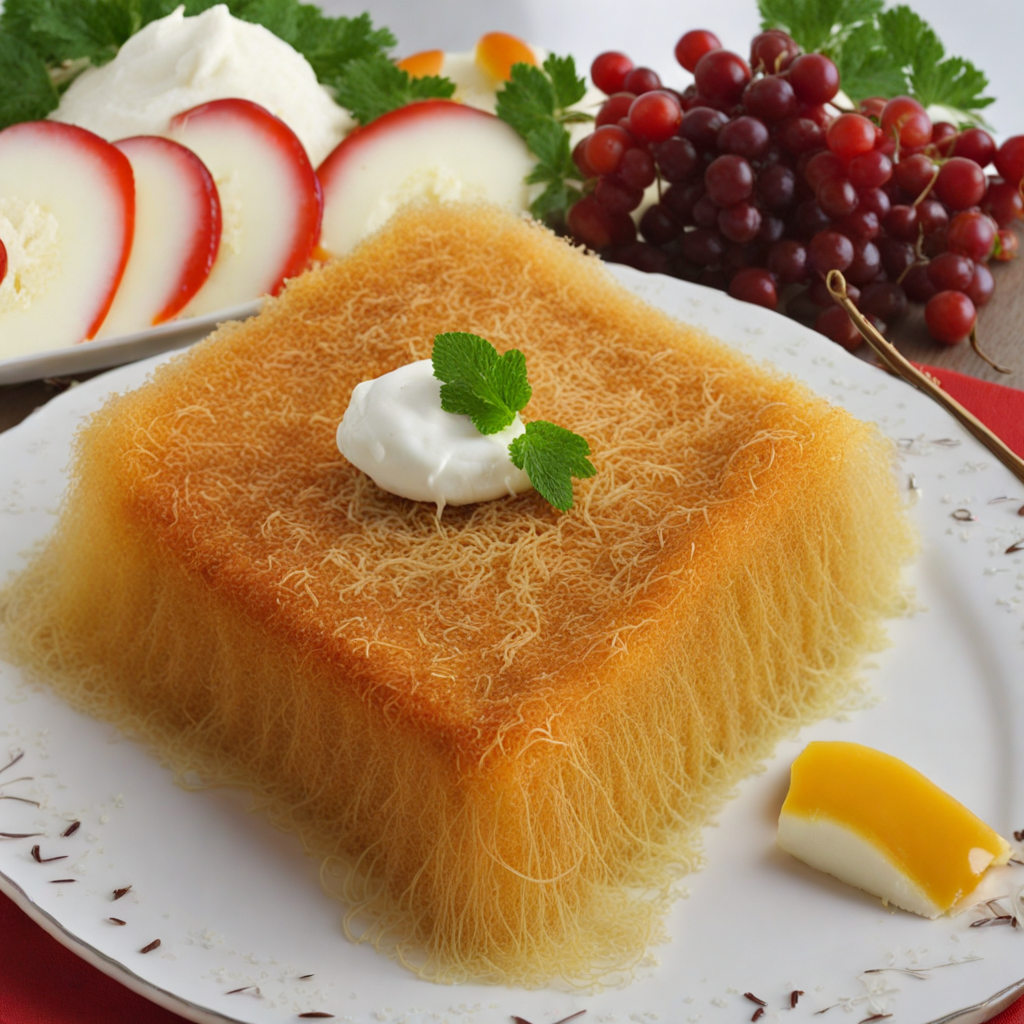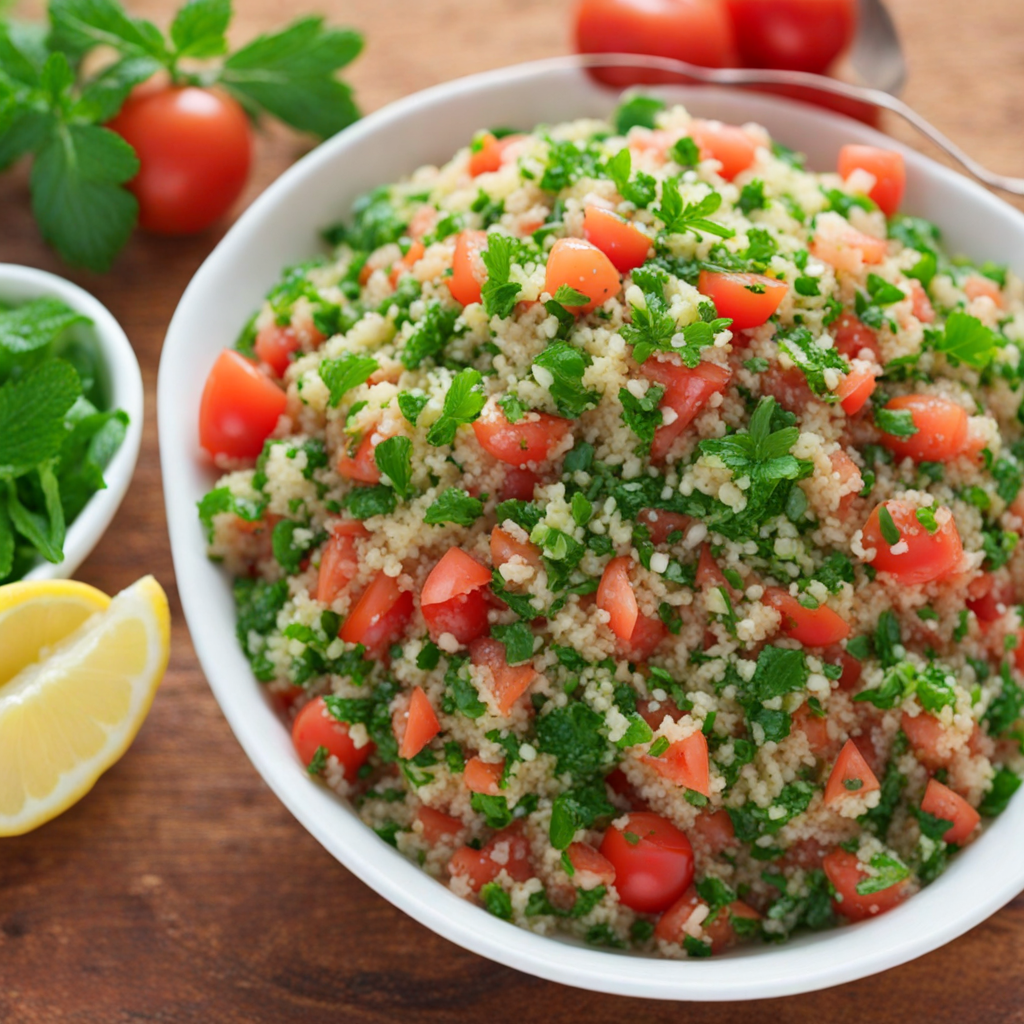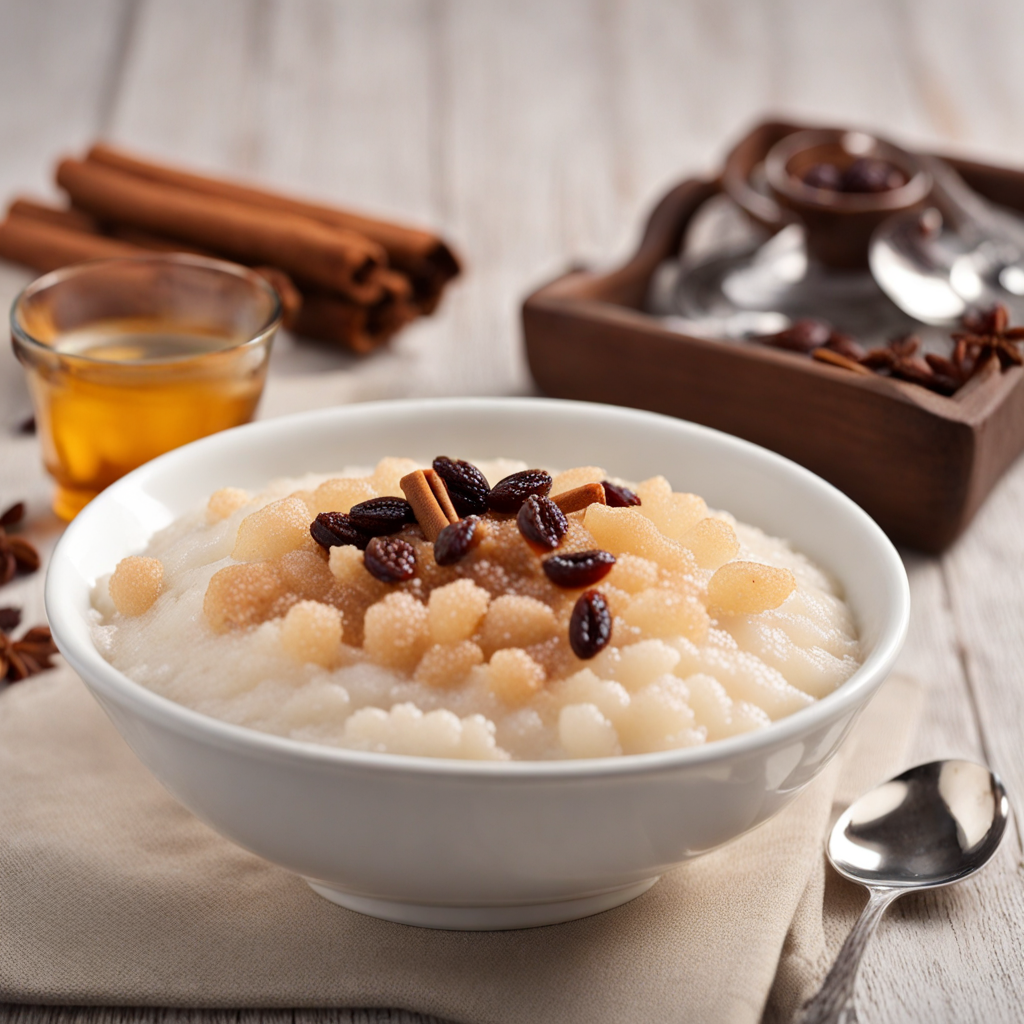Kanafeh
Kanafeh is a beloved traditional dessert from Lebanon, renowned for its unique combination of textures and flavors. At its core, this sweet treat features a base of finely shredded phyllo dough, known as kataifi, which is layered with a rich filling of melted cheese or a mix of semolina and sugar. The golden strands of dough are baked to a perfect crispness, creating a delightful contrast to the gooey and mildly salty cheese. This harmony of textures makes each bite of kanafeh a truly indulgent experience, as the crunchiness of the outer layer gives way to the warm, creamy center. What sets kanafeh apart is the aromatic syrup that is drizzled over the freshly baked dessert, infusing it with a sweet and fragrant essence. This syrup is typically made from sugar, water, and a hint of rose or orange blossom water, which adds a floral note that elevates the dish. The warm syrup seeps into the layers of the pastry, enhancing the flavors and providing a luscious sweetness that balances the richness of the cheese. Often garnished with crushed pistachios or walnuts, kanafeh is not only a feast for the palate but also a visual delight. In Lebanon, kanafeh is more than just a dessert; it is a cultural emblem often enjoyed during special occasions and celebrations. Served warm, it is typically sliced into generous portions, making it perfect for sharing with family and friends. The experience of savoring kanafeh is enhanced by its delightful aroma wafting through the air, inviting everyone to indulge in this rich and satisfying treat. For those looking to explore new flavors, kanafeh offers a delicious journey into the heart of Lebanese cuisine, promising a memorable taste that lingers long after the last bite.
How It Became This Dish
Origin of كنافة كنافة, or knafeh, is a beloved dessert that has become synonymous with Middle Eastern cuisine, particularly in Lebanon. The origins of كنافة can be traced back to the Arab world, with historical references dating back to the 10th century. Its creation is often attributed to the city of Damascus in Syria, where it is said to have been first prepared in the kitchens of the Umayyad Caliphate. The dessert is made from thin noodle-like pastry, known as kataifi or semolina dough, which is layered with a filling, typically made from cheese or clotted cream, and then soaked in a fragrant syrup made from sugar, water, and flavored with rose or orange blossom water. The earliest recorded mention of كنافة can be found in Arabic cookbooks from the medieval period. It was initially a dish reserved for special occasions, often enjoyed during Ramadan and other festive celebrations. The dessert's popularity spread throughout the Levant region, becoming a staple in various countries, including Jordan, Palestine, and Egypt, with each region adding its unique twist to the recipe. \n\n Cultural Significance In Lebanon, كنافة holds a special place in the hearts of many. It symbolizes hospitality and is often served to guests as a sign of welcome. The preparation of كنافة is considered an art form, reflecting the skill and creativity of the chef. Families often gather to prepare كنافة together, passing down secret recipes and techniques through generations. This communal aspect of making كنافة reinforces familial bonds and cultural traditions, making it more than just a dessert but a cherished experience. Lebanese كنافة is typically distinguished by its use of Nabulsi cheese, a traditional cheese originating from the city of Nablus in Palestine. This cheese is known for its excellent melting properties, which create a gooey, delightful filling when combined with the crispy kataifi layers. The dessert is often garnished with crushed pistachios or walnuts on top, enhancing its visual appeal and adding a delightful crunch. \n\n Development Over Time As time progressed, كنافة underwent various adaptations and innovations. In the 19th century, the dessert became increasingly popular among the upper classes in cities like Beirut. The growing influence of European culinary techniques also led to the introduction of new flavors and ingredients. Chefs began experimenting with different fillings, incorporating ingredients like chocolate, fruit, and even modern twists like Nutella. These innovations helped to broaden كنافة's appeal, attracting a younger generation of food lovers. The emergence of patisseries and dessert shops in urban areas played a significant role in popularizing كنافة. Iconic establishments such as Al-Balad and Abou Arab in Beirut became famous for their exceptional كنافة, drawing locals and tourists alike. The rise of social media in the 21st century further propelled the popularity of كنافة, with food bloggers and influencers showcasing their favorite varieties, introducing the dish to a global audience. \n\n Regional Variations While Lebanese كنافة is most commonly recognized, there are numerous regional variations that highlight the diversity of this dish. In Palestine, for instance, كنافة is often prepared as كنافة نابلسية, which features a thicker layer of cheese and is baked to a golden perfection before being drenched in syrup. In Egypt, كنافة is frequently layered with a rich pastry cream or custard, known as "عصيدة," offering a different texture and flavor profile. These regional adaptations not only showcase the versatility of كنافة but also reflect the cultural influences and preferences of different communities. Each variation tells a story of local ingredients, historical events, and shared culinary heritage, making كنافة a symbol of unity and diversity within the Arab world. \n\n Modern-Day Popularity Today, كنافة continues to thrive as a cultural icon in Lebanon and beyond. It is featured prominently in restaurants, bakeries, and street food stalls, often accompanied by a cup of strong Arabic coffee or tea. The dessert has transcended its traditional roots, finding its way into modern dessert menus and fusion cuisine. Chefs around the world are experimenting with كنافة, incorporating it into dishes like cheesecakes, ice creams, and even savory preparations. Food festivals and events celebrating Middle Eastern cuisine have also contributed to the rising popularity of كنافة. In recent years, international culinary competitions have showcased كنافة as a centerpiece, allowing chefs to demonstrate their creativity and skills in preparing this beloved dessert. \n\n Conclusion In conclusion, كنافة is more than just a dessert; it is a symbol of cultural heritage, community, and creativity. Its rich history, cultural significance, and continuous evolution reflect the essence of Lebanese hospitality and the broader Arab culinary tradition. As كنافة continues to captivate the palates of people around the world, it stands as a testament to the enduring power of food in connecting individuals and celebrating shared histories. Whether enjoyed in a traditional setting or experienced through modern interpretations, كنافة remains a delicious reminder of the rich tapestry of flavors and stories woven into the fabric of Middle Eastern cuisine.
You may like
Discover local flavors from Lebanon







